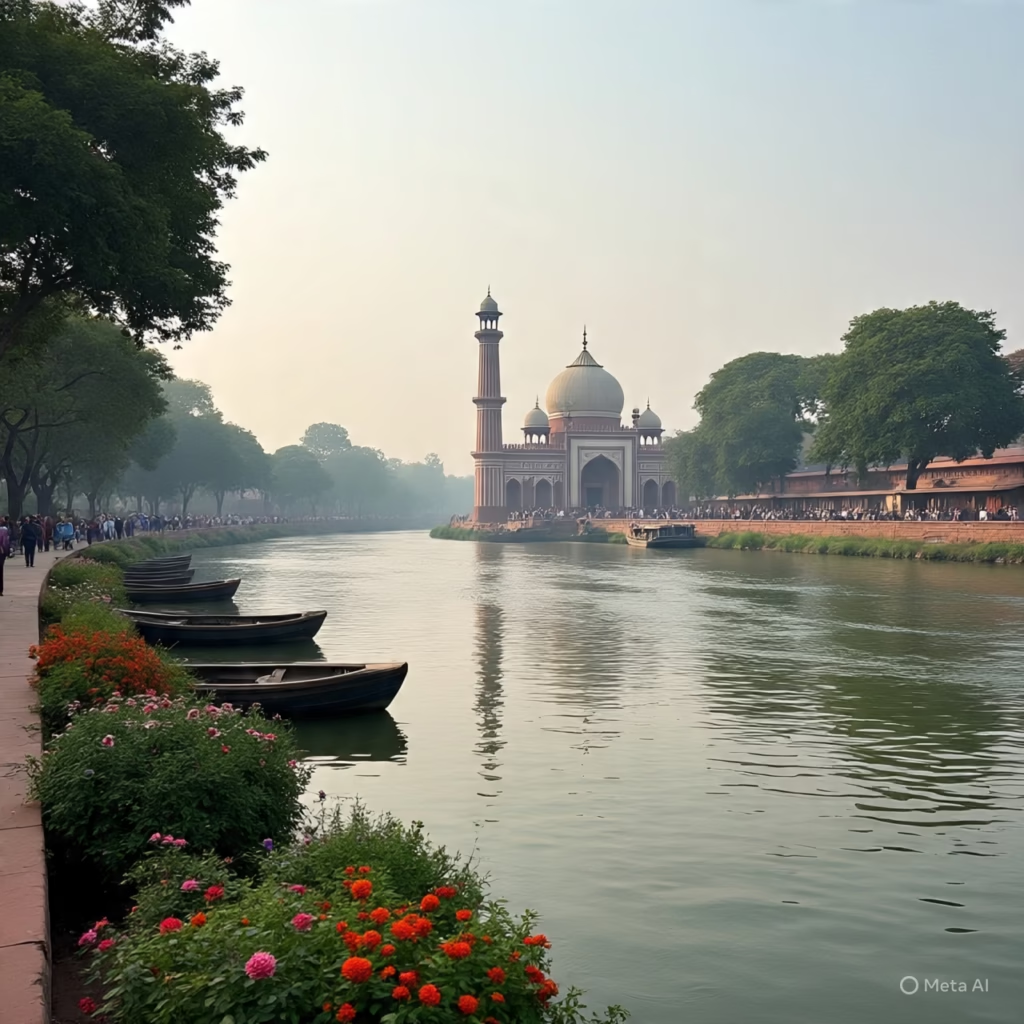
Introduction
Location of the Ravi River
The Ravi rises in the Himalayas of Himachal Pradesh, India, flowing through Kangra’s Multhan tehsil (Bara-Bhangal region), then through Chamba valley, cuts the Dhauladhar Range, enters the Punjab plains, forms part of the India–Pakistan border, flows past Lahore in Pakistan, and eventually joins the Chenab
Ravi River: Lifeline of Punjab’s Heritage
The Ravi commands attention from its origin in the Himalayan terrain to its journey through fertile Punjab plains, shaping landscapes, societies, and geopolitics. In this blog, I explore how this ancient sustains communities and connects two nations, weaving Punjab rivers heritage with modern water diplomacy like the Indus Waters Treaty.
Flow and Geography of the Ravi River
The Ravi originates from glacier-fed streams (Budhil, Tant Gari, Bhadal) in the Bara-Bhangal area of Himachal Pradesh’s Kangra district . It courses northwest through Chamba, carves the Dhauladhar Range gorge, then descends into Punjab plains near Pathankot and Madhopur . It flows along the Indo–Pak border for about 80 km before entering Pakistan, passing Lahore—“the river of Lahore”—and later joins the Chenab River .
Role in Agriculture & Irrigation
The Ravi delivers lifegiving water across both Indian and Pakistani Punjab. Through canal systems like the Upper Bari Doab from Madhopur headworks, it irrigates thousands of square kilometers . Farmers rely on its annual rhythms of spring snowmelt and monsoon flows for rice, wheat, and sugarcane farmer livelihoods that depend on steady supply.
Hydroelectric Power & Infrastructure
India harnesses the Ravi’s power potential through major dams:
Chamera Dam near Dalhousie (Himachal Pradesh) with multi-stage hydroelectric capacity: Chamera-I (540 MW), II (300 MW), III (231 MW) .
Ranjit Sagar Dam (Thein Dam), straddling Punjab and Jammu & Kashmir border, delivers irrigation and hydropower (~600 MW) .
Cross-Border Water Sharing & Politics
According to the 1960 Indus Water Treaty, India has rights on Ravi, Beas and Sutlej and Pakistan uses the western This agreement remains central to Indo-Pak water diplomacy, yet tensions arise, especially with infrastructure like the Shahpur Kandi barrage affecting downstream flows
Cultural & Historical Significance
The Ravi river holds profound cultural depth:
Ancient names include Iravati, Parushani, Hydraotes .
The Rigveda records the legendary “Battle of Ten Kings” fought near its banks .
It supports folklore, rituals, and is revered in both Hindu and Sikh traditions, with Guru Nanak’s birthplace (Nankana Sahib) on its bank .
Emerging Challenges river
The Ravi faces critical threats:
Pollution: Lahore region faces significant pharmaceutical and heavy metal contamination, some of the highest globally .
Changing Course: meanders have shifted up to 4.8 km due to training works on the border, causing damage on the Indian side .
Environmental Degradation: Deforestation, urban runoff, over-extraction, and climate shifts alter hydrology and ecological balance .
Future Outlook & Sustainable Strategies
Sustainable solutions are vital:
Pollution control via treatment plants, stricter regulations, and awareness campaigns.
Conservation via tree planting, eco-friendly agriculture, and river bank protection.
Cooperative water management, including joint monitoring under treaty frameworks.
The ambitious Ravi Riverfront Urban Developmenthttp://Urban Development Project in Lahore aims to rehabilitate the river and build a green riverfront city though it raises concerns about land acquisition and environmental impact .
FAQ Section
Q1: Where does the Ravi River start?
It starts in glaciers of Bara-Bhangal, Multhan tehsil, Kangra district, Himachal Pradesh, India.
Q2: Which countries does Ravi flow through?
It dives through India, Pakistan and forms part of the international border before it flows into the Pakistan.
Q3: What major dams use its water?
Chamera (Himachal Pradesh) and Ranjit Sagar (Punjab/J&K) dams serve irrigation and hydropower.
Q4: What treaty governs its waters?
The 1960 Indus Waters Treaty governs water-sharing, with Ravi allocated to India.
Q5: What are the current environmental concerns?
Major concerns include pollution (industrial, pharmaceutical), river-bank shift, overuse, and ecological degradation.
Q6: Are there development projects along the Ravi?
Yes—Lahore’s Ravi Riverfront Urban Development Project aims to transform the river into a clean, perennial freshwater body with urban infrastructure.
Call to Action
Follow us on social Media, and get in touch with us on Blogs@manyviral.com
https://manyviral.com/can-trumps-big-beautiful-bill-pass-the-senate/
You might to like read this blog

Leave a Reply